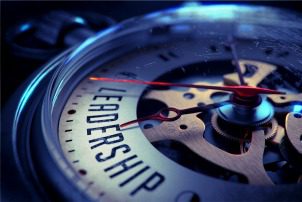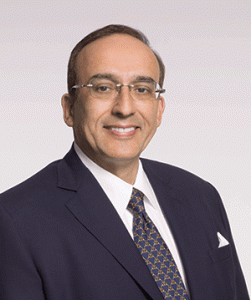
In 2013, after Voya Financial spun off from ING Group, its leaders had to rebuild and rebrand the investment and insurance firm, with a goal to make it “America’s retirement company.”
The $11 billion investment firm went public in April 2014, and two years later, Voya has achieved that goal. The company now serves more than 13 million customers and has been named one of the World’s Most Ethical Companies by the Ethisphere Institute for three consecutive years, and been listed as a Best Place to Work by Pensions & Investments.
But getting to this point was no small feat, said CHRO Kevin Silva. Along with establishing a new corporate structure and hierarchy, the company’s leaders knew the only way they could establish Voya as a service-driven customer-centric financial institution was to align the company’s financial strategy with a talent development strategy that would cultivate a culture of continuous improvement — despite facing major organizational change. “Our CEO understood that to achieve aggressive financial objectives, we had to have a human capital plan that focused on ‘how we work’, not just what we accomplish,” Silva said.

Leaders built a framework around nine core behaviors aligned with the new company’s mission and values. The framework focuses on things like demonstrating integrity, leading with passion and clarity, and delivering continuous improvement through talent development and customer service. “The nine competencies help define what it means to be a Voya employee,” said Brannigan Thompson, senior vice president for talent organization and leadership development.
Once the framework was defined, Voya worked with McKinsey & Co. to find a baseline measure of organizational health and to identify key metrics to track whether employees were adhering to the new culture. They wanted to look beyond employee engagement to track results-focused measures, such as leadership outcomes and differentiated performance. “We knew some of these metrics wouldn’t be well received,” Thompson said, which is one of the reasons that learning and coaching was such an important part of this transformation process.
A New Way to Lead
The Voya team developed a core leadership program that includes three flagship courses on change management, situational leadership and the art of performance management. These three courses were designed to educate managers about the importance of the leadership framework and to help them make the nine competencies part of their leadership style.
The Voya training and development team also designed the 6P workshop for managers — purpose, people, performance, process, partnership and problem solving — on how to accelerate and sustain continuous improvement through their leadership efforts. A Civil Treatment course taught participants how to create an environment that demonstrates value, respect and fair treatment for all individuals. “If we were going to make the change stick, we needed to be sure all of our leaders had the knowledge, ability and awareness of how to manage in the Voya way,” Thompson explained.
Some of these courses were developed externally by leadership development vendors and then customized for Voya, but the program’s flagship Art of Performance Management course was custom-designed by the Voya team, Thompson said. In the day-long session, participants learn to recognize their own barriers to communication and develop skills to help them provide feedback, coaching, recognize and reward, and foster a more collaborative culture.
All of the courses reinforce the importance of how people do their work, not just what outcomes they achieve, Silva said. “How we perform our duties is a core principle of the Voya culture.”

This concept is so important to the Voya leadership team that 50 percent of senior management performance appraisals are now based on how they manage; the other 50 percent are based on whether they meet their performance goals. The company is also not afraid to let people go if they don’t demonstrate Voya values in how they work — even if their performance results are strong. “Culture can’t just be a sign on the wall,” Silva said. “There have to be real consequences if people don’t adhere to our values.”
The Secret Sauce
Once the courses were in place, Voya rolled them out first to all new managers — including employees promoted to management roles — to ensure they had the skills to manage the Voya way. Then they rolled the courses out to existing managers to reinforce the corporate culture throughout the organization.

Heather Lavallee, president of tax-exempt markets for Voya, was in the first group of managers to complete the 6P course, which was originally only offered to leaders as their department went through a CI deployment. Lavallee has been with Voya/ING since 2008, and she said while there was always talk about the importance of leadership and mentoring as a way to drive business value, before becoming Voya, it was mostly lip service. It was only after Voya rolled out the new leadership framework that learning aligned with the company’s culture and drive for continuous improvement. “The training was the secret sauce in our transformation,” she explained.
Lavallee first heard about the 6P course in January 2012, when it was piloted among management staff. At the time the company was growing rapidly, and she said there was not a lot of trust between teams or departments. Employees had little power, and most problems had to be brought to management to solve. “There was no notion of empowerment or working together.”
When she heard the leadership team was looking for managers to try out the program, she volunteered. “I had nothing to lose, and if it helped us transform the culture, I was all in,” she explained. She said the training had a profound impact on the way she led her team and the way she thought about her role. “I learned that as a leader you have to take a step back,” she said. “You can’t just come in and solve everyone’s problems. You have to listen, and ask questions, and celebrate front-line workers who come up with solutions themselves.”
Now she actively looks for opportunities to drive continuous improvement, and she encourages her team to talk about problems rather than hiding them, which has led to real business results. For example, every year in the employee benefits department, 70 percent of the work comes in around January 1 — during open enrollment. “It’s a huge surge in work, and it hits different teams at different points in the process,” she said. Over the course of eight weeks, there are many points where one team might have nothing to do, while another is overwhelmed.
Rather than addressing a single bottleneck, her team addressed the problem holistically. They calculated the number of hours spent on each task across the entire claims processing lifecycle, then asked for volunteers to be cross-trained to fill gaps. “I thought people would be unhappy being asked to take on extra work, but they saw it as an opportunity to gain career mobility,” Lavallee said. After implementing the change, the benefits team was able to process twice as many plans in half the time, and the group now has eight cross-trained employees who can move fluidly across teams as needed.
Silva said that follow-up surveys report more than 80 percent of managers say the training has had a positive impact on their performance as a manager, and 93 percent say it is helping them perform their job better. Voya also has seen a 10-point improvement in its organizational health survey from 2012 to 2015, and high-performer retention climbed to 94 percent.
“Empowering people to work in different ways and problem solve is the most powerful tool a leader can give to their employees,” Lavallee said. “It had really transformed the way we work.”
Sarah Fister Gale is a writer based in Chicago. To comment, email editor@CLOmedia.com.















